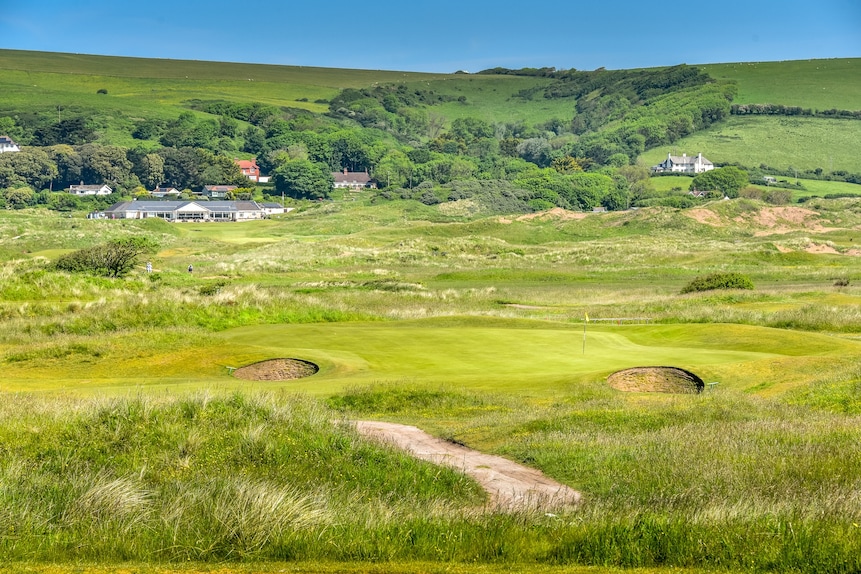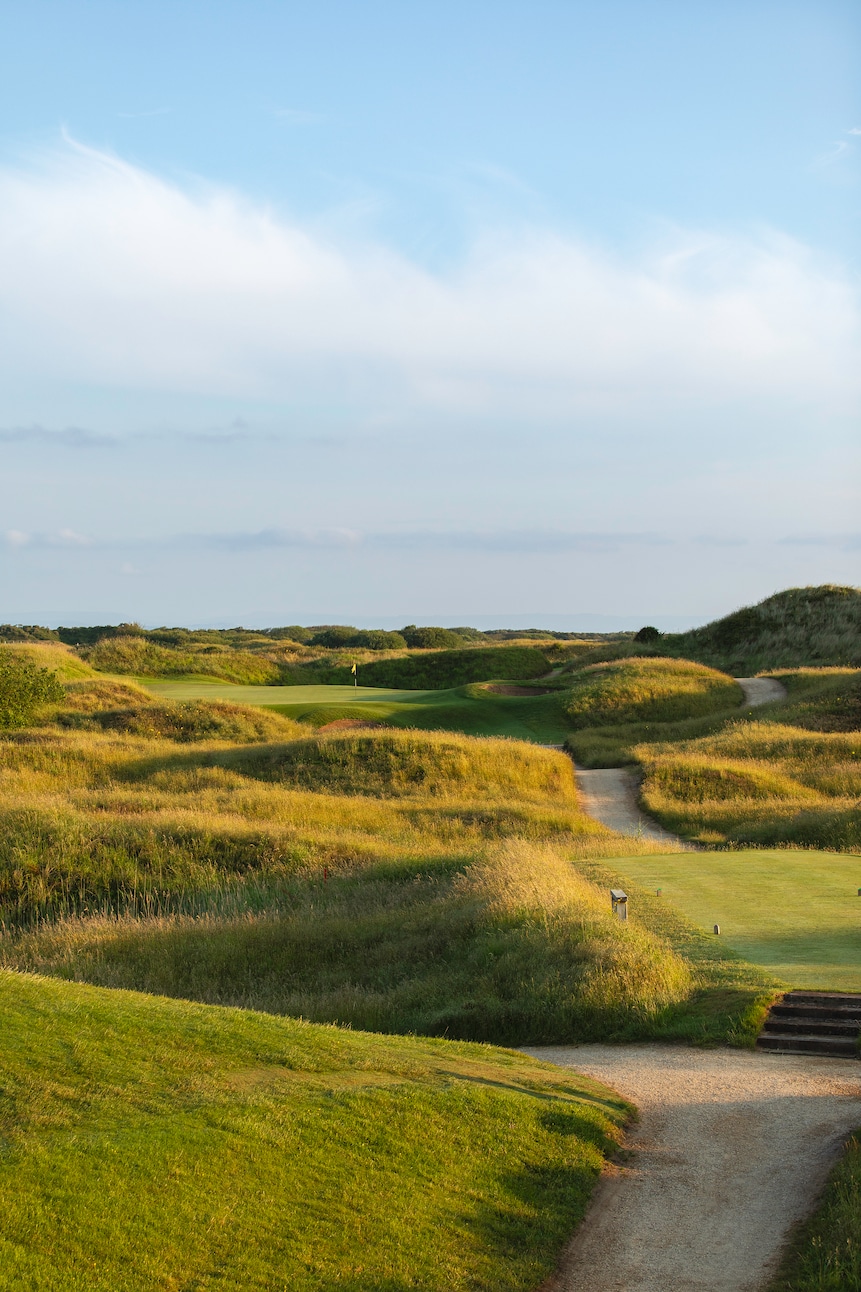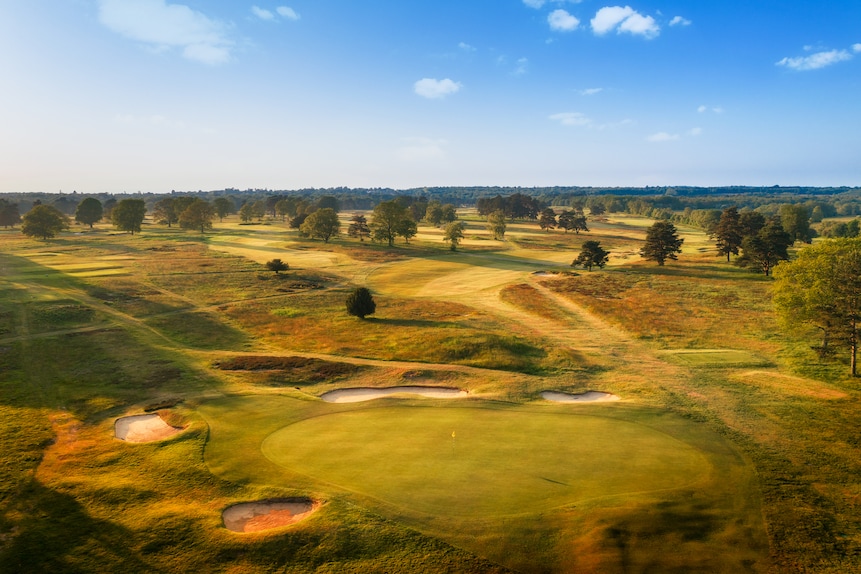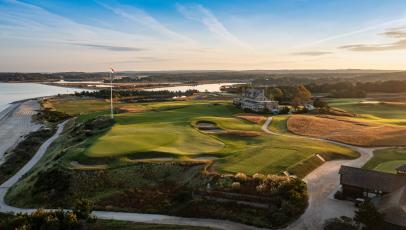Course Rankings
The best golf courses in England

The fourth green at The Berkshire Golf Club's Red course, one of two Herbert Fowler designs that made our Best in England ranking.
David Cannon
We're guessing most North American golfers don't need much convincing about why a golf trip to England is worth it. You’re familiar with the great venues of the Open rota such as Royal St. George’s and Royal Liverpool, which are firmly in the top 100 of our World’s 100 Greatest Courses. Some of England’s best golf courses, though, might ones you don’t know much about. Visiting these layouts is worth the trip alone.
The strategic marvel that is Woking Golf Club, the work of two amateur Scottish architects, is still studied by veteran and aspiring golf architects alike. Anybody would marvel at Herbert Fowler’s tremendous routing of 36 holes at The Berkshire Golf Club, which includes some of the best par 3s in the United Kingdom (including six par 3s at the Red course). And Dr. Alister MacKenzie's first design wasn't in his native Scotland but at Alwoodley, which firmly makes our list of the Best in England. And though you might have Royal Birkdale on your bucket list, you might not be aware that many U.K. golfers consider its neighbor, Hillside Golf Club, just as much of a gem.
Whether you're a budding student of golf course architecture or just a list chaser, you will appreciate this list of the best golf courses in England. Each of them are worth playing for their own reasons.
Editor's Note: Our Best Courses in England ranking is part of our rollout of the Best Courses in Every Country. Check back over the next few weeks for more of our rankings of the best golf around the world.
We urge you to click through to each individual course page for bonus photography, drone footage and expanded reviews. Plus, you can now leave your own ratings on the courses you’ve played … to make your case why your favorite should be ranked higher.

35. Royal North Devon Golf Club (Westward Ho)
Westward Ho!, Devon, England

34. West Sussex Golf Club
Wiggonholt, West Sussex, England

33. Saunton Golf Club (West)
Braunton, Devon, England


31. West Hill Golf Club
Brookwood, Surrey, England

30. The Addington Golf Club
Croydon, Surrey, England

29. Wallasey Golf Club
Wallasey, Merseyside, England

28. Saunton Golf Club (East)
Braunton, Devon, England

27. The Berkshire Golf Club (Blue)
Ascot, Berkshire, England

26. Hillside Golf Club
Southport, Sefton, England

25. The Berkshire Golf Club (Red)
Ascot, Berkshire, England


23. Silloth-on-Solway Golf Club
Silloth, Cumbria, England

22. Formby Golf Club
Formby, Merseyside, England

21. Notts Golf Club (Hollinwell)
Kirkby in Ashfield, Nottinghamshire, England


19. Queenwood Golf Club
Ottershaw, Surrey, England

18. Wentworth Club (East)
Virginia Water, Surrey, England

17. Royal West Norfolk Golf Club
Brancaster, Norfolk, England

16. Wentworth Club (West)
Virginia Water, Surrey, England


14. Walton Heath Golf Club (New)
Walton-on-the-Hill, Surrey, England





9. Walton Heath Golf Club (Old)
Walton-on-the-Hill, Surrey, England








• • •
Explore our brand-new course reviews experience with individual course pages for bonus photography, drone footage and expanded reviews of top international courses and all 17,000-plus courses in the United States. Post your own ratings for courses you’ve played … and tell us where it should be ranked.



